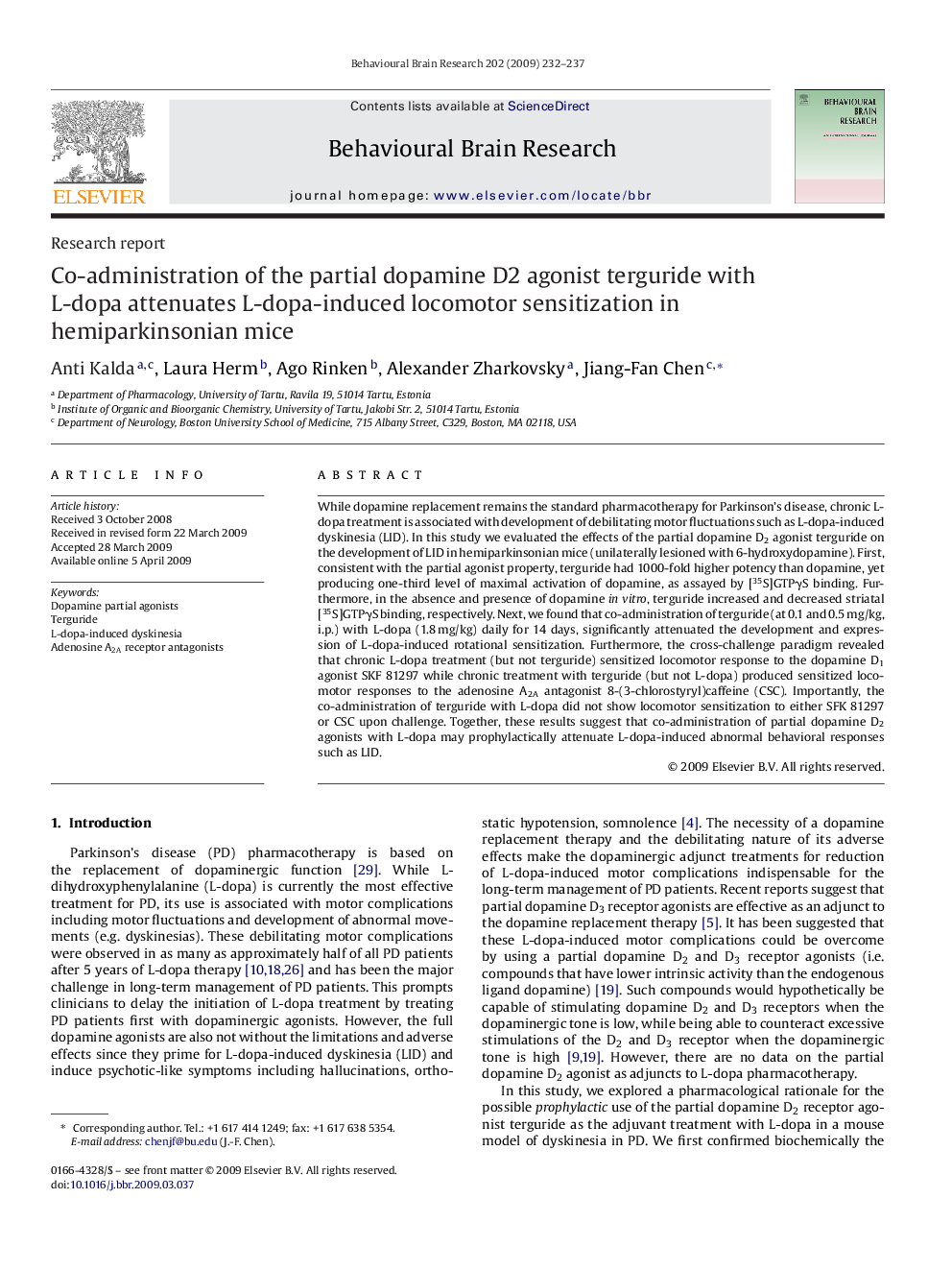| Article ID | Journal | Published Year | Pages | File Type |
|---|---|---|---|---|
| 4314745 | Behavioural Brain Research | 2009 | 6 Pages |
While dopamine replacement remains the standard pharmacotherapy for Parkinson's disease, chronic L-dopa treatment is associated with development of debilitating motor fluctuations such as L-dopa-induced dyskinesia (LID). In this study we evaluated the effects of the partial dopamine D2 agonist terguride on the development of LID in hemiparkinsonian mice (unilaterally lesioned with 6-hydroxydopamine). First, consistent with the partial agonist property, terguride had 1000-fold higher potency than dopamine, yet producing one-third level of maximal activation of dopamine, as assayed by [35S]GTPγS binding. Furthermore, in the absence and presence of dopamine in vitro, terguride increased and decreased striatal [35S]GTPγS binding, respectively. Next, we found that co-administration of terguride (at 0.1 and 0.5 mg/kg, i.p.) with L-dopa (1.8 mg/kg) daily for 14 days, significantly attenuated the development and expression of L-dopa-induced rotational sensitization. Furthermore, the cross-challenge paradigm revealed that chronic L-dopa treatment (but not terguride) sensitized locomotor response to the dopamine D1 agonist SKF 81297 while chronic treatment with terguride (but not L-dopa) produced sensitized locomotor responses to the adenosine A2A antagonist 8-(3-chlorostyryl)caffeine (CSC). Importantly, the co-administration of terguride with L-dopa did not show locomotor sensitization to either SFK 81297 or CSC upon challenge. Together, these results suggest that co-administration of partial dopamine D2 agonists with L-dopa may prophylactically attenuate L-dopa-induced abnormal behavioral responses such as LID.
